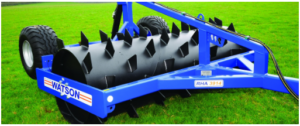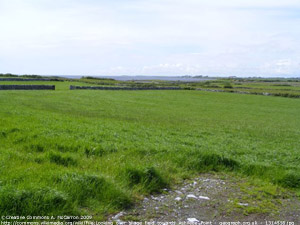Soil Compaction and Silage Production
20 June 2022With rising costs, it is important to make sure that every acre is working at peak performance.
Identifying compaction
Soil compaction can be measured using a soil penetrometer. This works by measuring the force required to push a metal rod into the soil. This method is simple and allows large areas to be covered in a short time.
It is also useful to dig a soil pit to identify where the compaction is in the soil profile. This involves digging a small pit 50cm square and at least 40cm deep. A block of soil a spade width square and spade length deep should be removed. Along with the side of the pit, this block should be examined for signs of compaction. Things that indicate a compacted soil include a blocky, hard to break structure, few or no earthworms, shallow horizontal roots, a greyish soil colour and a stale smell.
For more information on soil assessment see https://www.sruc.ac.uk/media/jhwjyym0/healthy-grassland-soils.pdf
Alleviating soil compaction
The type of machinery used to cure a compaction problem will depend on the depth at which the compacted layer is found. To solve problems from the surface down to 15cm, a pasture slitter or aerator should be used. Problems at this depth are likely to be caused by livestock. Deeper compaction can be alleviated by the use of a sward lifter or grassland subsoiler. This compaction is more likely to be caused by heavy machinery traffic, so would be more common in silage fields.
A number of companies produce large diameter bladed rollers. These do offer a high work rate as they rely on the impact of the teeth to shatter the compacted layer. It should be noted that although they have the appearance of a field roller, they should be used only in drier soil conditions for best effect (so not the conditions for rolling down stones).
Using any of these machines in suboptimal conditions can make compaction worse rather than better.
Avoiding soil compaction
The best way to reduce compaction is to stop it happening in the first place. The use of wider tyres is becoming more common place on tractors and trailers. A more novel way is the adoption of a controlled traffic farming (CTF) system. This practice is more common in an arable setting where tramlines are easy to follow. However, research by SRUC’s Dr Paul Hardgreaves1, and in Scandinavia, has shown that this approach is highly beneficial for silage production.
It has been shown that in a traditional silage making operation, most of the field will experience wheeling at some point. Also, the first wheeling causes the most damage, with subsequent wheelings causing a relatively lower increase in compaction.
The use of a repeatable GPS A -B line allows the creation of a “virtual” tramline. In Paul’s research in south-west Scotland, this was set at 9 metres. This allows for the use of dribble bars, mowers, tedders and rakes with a 9-metre working width. Fertiliser spreaders could be set to 18 or 27 metres depending on product and wind speed.
As part of this experiment, a self-propelled forage harvester was used, with the tractor and trailer driving along the next parallel wheels track. This system resulted in a trafficked area of 19%. This, in turn, led to an increase in silage yield of 13%. At the time of publishing (2017), this gave a potential extra profit of between £40 and £49 per hectare.
Other research2 has noted that clover is adversely affected by compaction, so reducing wheelings can also increase the longevity of clover in the sward. This would have a beneficial effect on silage protein content and reduce fertiliser requirements.
Setting up a CTF system does require investment but does show a return. It is also important that everyone involved is on board with the system and avoids the temptation to take the shortest route to the gate.
alasdair.scott@sac.co.uk; 01555 662562
References
- Potential for Controlled Traffic Farming (CTF) in Grass Silage Production: Agronomics, system design and economics. P. R. Hargreaves, S. Peets, W. C. T. Chamen, D. R. White, P. A. Misiewicz and R. J. Godwin
- Profitability of Controlled Traffic in Grass Silage Production. Hans Alvemar, Hans Andersson & Hans Henrik Pedersen
Sign up to the FAS newsletter
Receive updates on news, events and publications from Scotland’s Farm Advisory Service


